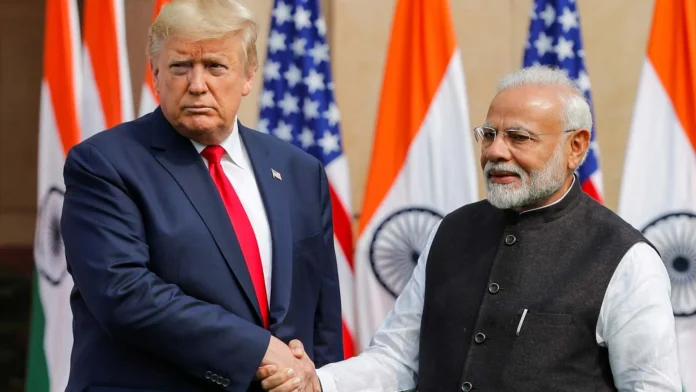The much-anticipated meeting between Indian Prime Minister Narendra Modi and former U.S. President Donald Trump is set to take place in Washington, D.C., on February 12-13, 2025. The meeting is expected to cover key areas such as trade, defense cooperation, and immigration policies. With both leaders known for their strong leadership styles and nationalist policies, this summit is likely to shape the future of U.S.-India relations.
In This Article:
Key Agenda Points: Trade, Defense, and Immigration
Trade Relations: Balancing Economic Interests
Trade has been a contentious issue between the two nations, with the U.S. demanding reduced tariffs and a more balanced trade relationship. Trump has repeatedly criticized India’s high import duties, particularly on American goods such as medical equipment, electronics, and agricultural products.
To address these concerns, Modi’s administration is considering concessions in certain sectors to facilitate increased U.S. exports to India. Reports suggest that India might lower tariffs on specific American goods in an attempt to resolve trade imbalances. In return, India is seeking better access to the U.S. market for its pharmaceutical and IT sectors.
This discussion comes amid heightened global economic uncertainties, with both nations aiming to strengthen bilateral trade to foster economic growth and stability.
Defense Cooperation: Expanding Strategic Partnerships
India and the U.S. have steadily expanded their defense collaborations in recent years. This meeting is expected to solidify further military agreements, with India in talks to purchase and co-produce advanced defense equipment.
A key topic of discussion is India’s acquisition of U.S.-made Stryker combat vehicles and the potential co-production of General Electric fighter jet engines in India. The goal is to enhance India’s defense capabilities while also boosting the “Make in India” initiative, which aims to expand the country’s domestic manufacturing of defense equipment.
Additionally, the U.S. is looking to strengthen its Indo-Pacific strategy by deepening military cooperation with India, particularly in countering China’s influence in the region. Enhanced intelligence sharing and joint military exercises may also be on the table during the discussions.
Immigration Policies: Addressing Visa and Deportation Concerns
Another crucial aspect of the meeting is immigration. The U.S. has recently emphasized stricter immigration policies, and India has agreed to take back a number of illegal Indian immigrants living in the U.S. As per recent reports, an estimated 720,000 undocumented Indian immigrants currently reside in the U.S., making it one of the largest foreign communities affected by deportation policies.
In return, India is expected to push for an increase in H-1B visas for skilled Indian professionals, particularly in the IT and engineering sectors. This visa category is crucial for India’s workforce, given the substantial number of Indian professionals employed in the U.S. tech industry.
Energy and Economic Investments: Strengthening Ties
Beyond trade and defense, Modi and Trump are likely to discuss energy cooperation, with India aiming to boost imports of U.S. liquefied natural gas (LNG). This move aligns with India’s efforts to diversify its energy sources and reduce dependency on Middle Eastern countries.
The Indian government is also seeking increased U.S. investments in infrastructure and technology. With India’s rapidly expanding digital economy, there is significant potential for American companies to invest in emerging sectors such as artificial intelligence, semiconductor manufacturing, and clean energy initiatives.
Implications of the Trump-Modi Meeting
This high-profile summit has the potential to reshape U.S.-India relations, bringing in new trade agreements, defense collaborations, and immigration policies. With both leaders having previously demonstrated a strong working relationship, expectations are high for substantive progress in key areas.
While the meeting is expected to address major concerns, the long-term impact will depend on how both nations implement the agreements reached. If successful, the summit could mark a new chapter in U.S.-India relations, strengthening both nations’ positions on the global stage.
The upcoming Trump-Modi meeting is set to be a defining moment in bilateral relations between the two largest democracies. From trade negotiations to defense agreements and immigration policies, the discussions will cover a broad spectrum of topics vital to both nations’ economic and strategic interests.
As the world watches closely, the outcomes of this summit could shape the future of Indo-U.S. ties, reinforcing India’s position as a key U.S. ally in Asia while opening new avenues for economic and military collaboration. The meeting is not just about policy but about building a stronger foundation for a long-term partnership between the two global powers.
By – Jyothi




